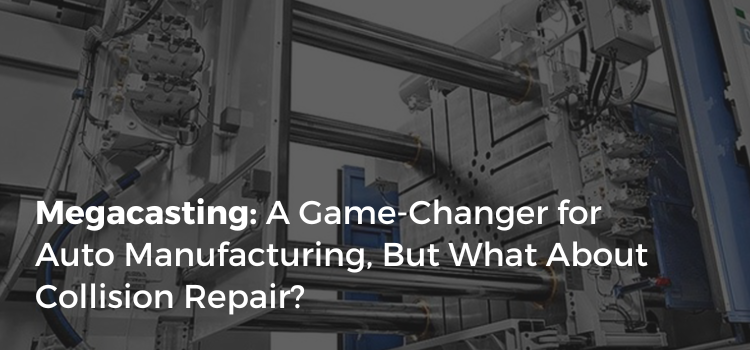Megacasting: A Game-Changer for Auto Manufacturing, But What About Collision Repair?

The automotive industry is witnessing a revolutionary manufacturing technique called megacasting, and it’s gaining traction fast. This process allows for the casting of large body structures, potentially replacing up to 70 individual parts with a single, massive component. But what does this mean for the collision repair industry?
The Rise of Megacasting
While Tesla has been leading the charge (with Elon Musk dubbing it “Gigacasting,” because, well, he’s Elon), other major players are jumping on board. Volvo Cars recently announced plans to implement megacasting for rear body structures at their Torslanda, Sweden plant.
So, what’s the appeal?
Megacasting offers several potential advantages. A significant reduction in the number of individual parts could mean potential lowering of assembly costs and emissions, and increased flexibility in vehicle platform engineering. An additional cost savings could be that megacasting, when compared to the current die casting method, is much easier on the service life of a component mold. Due to “thermal shock,” the rule of thumb is that a die-casting mold is good for 100,000-150,000 components and by contrast, one forming tool would be within tolerance for 5-6 million components.
Perhaps most impressive is the ability to cast extremely large shell components in one piece – a feat previously limited to smaller parts like suspension strut towers and side rails. Now, we’re seeing entire rear floor panels cast as a single unit, eliminating the need for welding multiple parts and reducing distortion.
The Collision Repair Dilemma
While megacasting promises efficiency gains for manufacturers, it could complicate matters for collision repair shops. Here’s why:
Less flexibility in repairs: With megacast parts replacing multiple spot-welded components, the option to remove and replace smaller damaged sections by drilling out spot welds may disappear.
All-or-nothing replacements: Damage to a megacast component might necessitate replacing the entire large structure, rather than just a small section.
Increased complexity: These larger components could present challenges in alignment, clamping, and welding during installation due to their size and complex geometries.
Logistical hurdles: Shipping and storing these oversized components could prove difficult for repair shops with limited space.
As megacasting technology continues to evolve, the collision repair industry will need to adapt. This might involve investing in new equipment, expanding storage facilities, and developing new repair techniques to handle these massive components effectively. PartsTrader will continue to monitor this trend and keep our network informed of developments that could impact the collision repair landscape.
Stay tuned for updates as we navigate this shifting terrain together.
